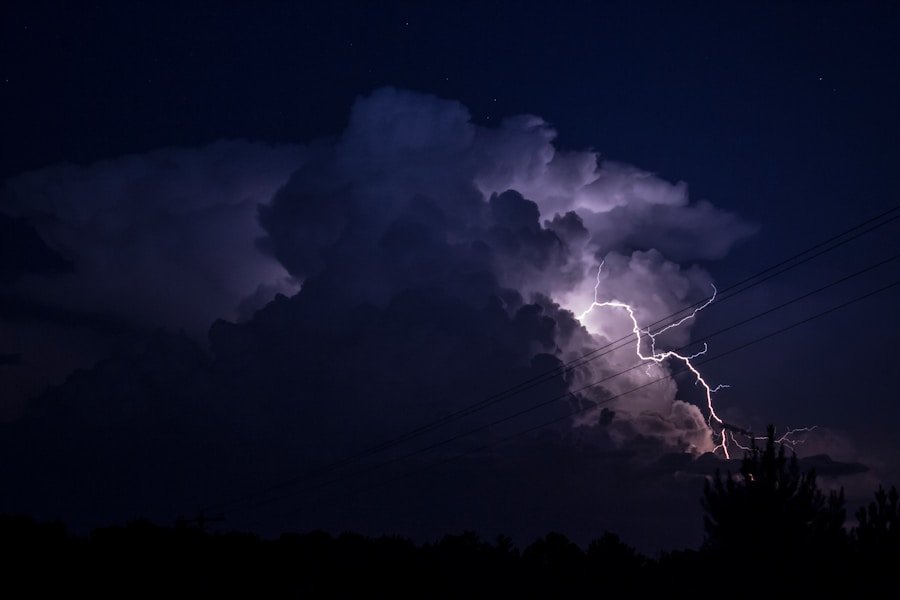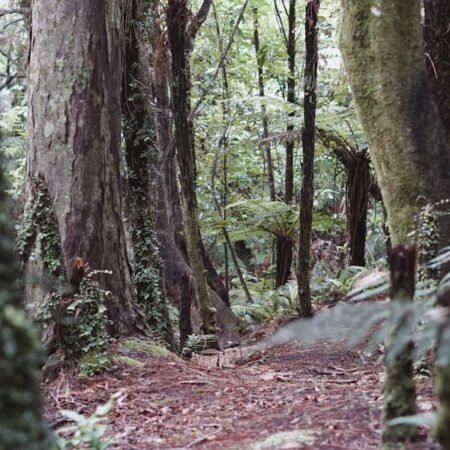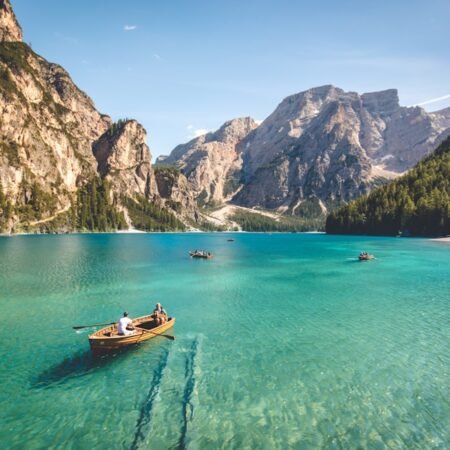When venturing into the wilderness for a camping trip, selecting a safe campsite is paramount for a successful and enjoyable experience. One of the primary factors to consider when choosing a campsite is the topography of the area. It is essential to identify a flat and level surface to pitch your tent, thereby minimizing the risk of accidents or discomfort during the night.
Furthermore, it is crucial to avoid setting up camp in close proximity to bodies of water, as they can attract wildlife and increase the likelihood of flooding. Another vital consideration is to steer clear of camping under dead or unstable trees, as they pose a significant safety risk. Lastly, it is imperative to stay informed about the weather forecast and opt for a campsite that offers natural protection from the elements, such as tree cover or rock formations.
In addition to the terrain, it is also vital to consider the proximity of your campsite to potential hazards. Avoid setting up camp near cliffs, steep slopes, or areas prone to rockslides or avalanches. It is also essential to be aware of potential natural hazards, such as flash flood zones or areas with high wildfire risk.
By carefully selecting a safe campsite, you can significantly reduce the risk of accidents and ensure a more enjoyable and safe camping experience in the wilderness.
Key Takeaways
- Choose a campsite that is flat, away from water sources, and free from potential hazards like falling branches or rockslides
- Build a safe campfire by clearing the area, using a fire ring or pit, and never leaving it unattended
- Store food and garbage properly by using bear-proof containers or hanging food in a tree away from the campsite
- Navigate safely by bringing a map and compass, knowing how to use them, and staying on marked trails
- Deal with wildlife encounters by making noise, storing food properly, and knowing how to react to different animals
- Be prepared for emergencies with a first aid kit, communication devices, and knowledge of basic first aid techniques
- Follow leave no trace principles by packing out all trash, minimizing campfire impact, and respecting wildlife and other campers.
Building a safe campfire
Building a campfire is a quintessential part of the camping experience, but it’s important to do so safely and responsibly. Before starting a campfire, it’s crucial to check for any fire restrictions or regulations in the area you’ll be camping in. Once you’ve confirmed that it’s safe to build a fire, it’s important to choose a suitable location for your campfire.
Look for an existing fire ring or designated fire pit, and if one isn’t available, clear away any flammable debris and create a small, contained area for your fire. When building a campfire, it’s important to use only local firewood and never transport wood from one area to another, as this can spread invasive species and diseases. Additionally, it’s important to keep your campfire small and manageable, and never leave it unattended.
Before leaving your campsite or going to bed, make sure your campfire is completely extinguished by pouring water over the embers and stirring them until they are cool to the touch. By following these safety tips, you can enjoy the warmth and ambiance of a campfire while minimizing the risk of wildfires and other accidents.
Storing food and garbage properly
Properly storing food and garbage is essential for both your safety and the well-being of the wildlife in the wilderness. When camping in bear country or other areas with potentially dangerous wildlife, it’s important to store all food and scented items in bear-proof containers or bear bags hung from a tree at least 100 feet away from your campsite. This not only helps protect you from potential wildlife encounters but also prevents animals from becoming habituated to human food, which can have detrimental effects on their behavior and survival.
In addition to storing food properly, it’s also important to manage your garbage responsibly. Never leave food wrappers, scraps, or other trash lying around your campsite, as this can attract wildlife and create potential safety hazards. Instead, pack out all of your garbage in sealed bags and dispose of it properly when you return to civilization.
By taking these precautions, you can minimize the risk of wildlife encounters and help preserve the natural environment for future generations to enjoy.
Navigating safely in the wilderness
| Safety Tips for Camping in the Wilderness |
|---|
| 1. Plan your trip and inform someone of your itinerary |
| 2. Pack essential safety gear such as first aid kit, map, compass, and flashlight |
| 3. Check the weather forecast before heading out |
| 4. Stay hydrated and bring enough water for the trip |
| 5. Be aware of wildlife and keep a safe distance |
| 6. Set up camp away from potential hazards like cliffs, unstable trees, or bodies of water |
| 7. Keep food stored properly to avoid attracting animals |
| 8. Practice fire safety and follow local regulations |
| 9. Be mindful of your surroundings and be prepared for emergencies |
| 10. Leave no trace and respect the wilderness |
Navigating safely in the wilderness is an essential skill for any camper venturing into remote areas. Before setting out on your trip, it’s important to familiarize yourself with the area you’ll be exploring and bring along a detailed map and compass or GPS device. It’s also important to let someone know your planned route and expected return time in case of an emergency.
When navigating in the wilderness, it’s important to stay on established trails whenever possible to minimize the impact on the environment and reduce the risk of getting lost. If you do find yourself off-trail, pay close attention to landmarks and natural features to help orient yourself and find your way back to familiar terrain. Additionally, it’s important to be mindful of changing weather conditions and plan your route accordingly to avoid potential hazards such as flash floods or avalanches.
By practicing good navigation skills and being prepared for unexpected challenges, you can ensure a safer and more enjoyable camping experience in the wilderness.
Dealing with wildlife encounters
Encountering wildlife is one of the most exciting aspects of camping in the wilderness, but it’s important to approach these encounters with caution and respect. When encountering wildlife, it’s important to keep a safe distance and never approach or feed wild animals. It’s also important to be mindful of potential hazards such as venomous snakes or aggressive animals and take appropriate precautions to avoid conflicts.
In bear country, it’s important to make noise while hiking to alert bears of your presence and carry bear spray as a last resort defense against an aggressive bear. Additionally, it’s important to properly store food and scented items as mentioned earlier to minimize the risk of attracting bears or other wildlife to your campsite. By being aware of potential wildlife encounters and taking appropriate precautions, you can enjoy observing animals in their natural habitat while minimizing the risk of dangerous or harmful interactions.
First aid and emergency preparedness
Being prepared for emergencies is essential when camping in the wilderness, as access to medical care may be limited or unavailable. Before setting out on your trip, it’s important to pack a well-stocked first aid kit and familiarize yourself with basic first aid techniques for treating common injuries such as cuts, burns, sprains, and insect bites. It’s also important to bring along any necessary medications and inform your camping companions of any medical conditions or allergies they should be aware of.
In addition to first aid supplies, it’s important to carry emergency communication devices such as a satellite phone or personal locator beacon in case of an emergency. It’s also important to have a plan in place for how to respond to potential emergencies such as getting lost or encountering severe weather conditions. By being prepared for unexpected challenges and having the necessary supplies and knowledge to respond effectively, you can minimize the risk of serious injury or illness while camping in the wilderness.
Leave no trace principles
Finally, one of the most important safety tips for camping in the wilderness is to practice Leave No Trace principles to minimize your impact on the environment and preserve the natural beauty of the wilderness for future generations. This includes packing out all garbage, minimizing campfire impacts, respecting wildlife by observing from a distance, staying on established trails, and being mindful of other campers by keeping noise levels down and respecting their privacy. By following Leave No Trace principles, you can help protect fragile ecosystems and ensure that others can enjoy the same pristine wilderness that you experienced during your camping trip.
Additionally, practicing Leave No Trace principles can help minimize potential safety hazards such as conflicts with wildlife or damage to natural features caused by human activity. In conclusion, camping in the wilderness can be an incredibly rewarding experience, but it’s important to prioritize safety at all times. By choosing a safe campsite, building a safe campfire, storing food and garbage properly, navigating safely in the wilderness, dealing with wildlife encounters responsibly, being prepared for emergencies, and practicing Leave No Trace principles, you can minimize potential risks and ensure a safer and more enjoyable camping experience in the great outdoors.
Whether you’re an experienced camper or new to wilderness adventures, following these safety tips can help you make the most of your time in nature while staying safe and respectful of the environment.
FAQs
What are the most important safety tips for camping in the wilderness?
Some of the most important safety tips for camping in the wilderness include: – Always informing someone of your camping plans and expected return date – Bringing a first aid kit and knowing how to use it – Packing enough food and water for your trip – Being aware of your surroundings and any potential hazards – Knowing how to properly set up and use camping equipment – Following Leave No Trace principles to minimize impact on the environment













